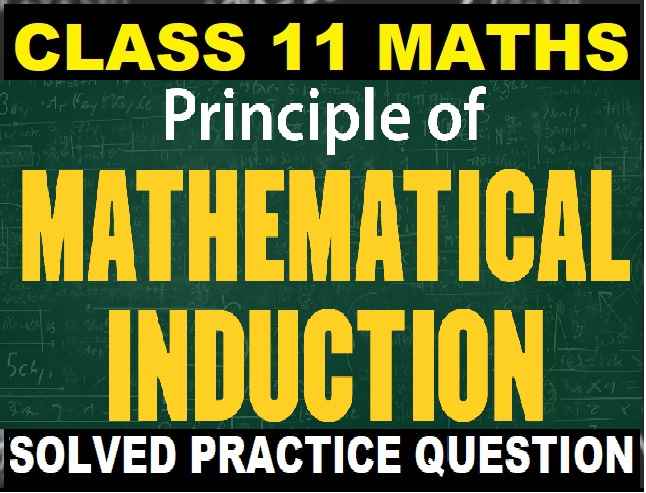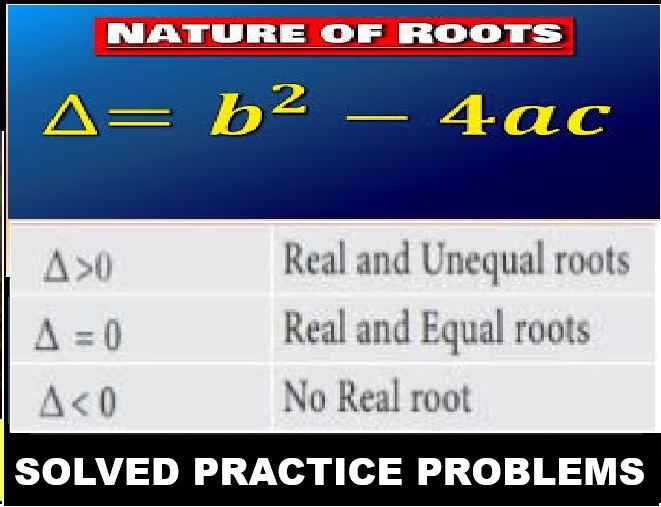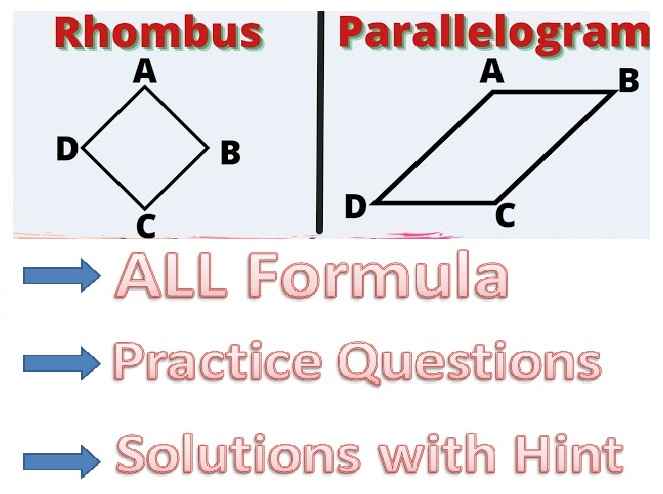Mathematical Induction Class 11 OP Malhotra Exe-8B ISC Maths Solutions Ch-8 Solutions. In this article you would learn about Proving Divisibility. Step by step solutions of latest textbook has been given as latest syllabus. Visit official Website CISCE for detail information about ISC Board Class-11 Mathematics.

Mathematical Induction Class 11 OP Malhotra Exe-8B ISC Maths Solutions Ch-8
| Board | ISC |
| Publications | S Chand |
| Subject | Maths |
| Class | 11th |
| Chapter-8 | Mathematical Induction |
| Writer | OP Malhotra |
| Exe-8(B) | Proving Divisibility. |
Exercise- 8B
Mathematical Induction Class 11 OP Malhotra Exe-8B Solution.
Que-1: n (n + 1) (n + 5) is a multiple of 6.
Sol: Let P (n) be the statement: n (n + 1) in + 5) is a multiple of 6.
For n = 1 ; 1 (1 + 1) (1 + 6) i.e. 12 is multiple of 6, which is true ∴ P (1) is true.
Let us assume that P (m) is true, where m ∈ N
i.e. m (m + 1) (m + 5) is a multiple of 6
⇒ m (m + 1) (m + 5) = 6k, where k ∈ N …(1)
We shall prove that P (m + 1) is true.
Now P (m + 1): (m + 1) (m + 1 + 1) (m + 1 + 5) = (m + 1) (m + 2) (m + 6)
= (m + 1) [m² + 8m + 12] = (m + 1) [m² + 5m + 3m+ 12]
= (m + 1) (m² + 5m) + (m + 1) 3 (m + 4)
= (m + 1) m (m + 5) + 3m (m + 1) + 12 (m + 1)
= 6k + 3.2k’ + 12 (m + 1) [∵ product of n positive integers is divisible by n!]
= 6 [k + k’ + 2 (m + 1)] = 6k”, which is divisible by 6
where k” = k + k’ + 2 (m + 1) ∈ N
∴ P (m + 1) is true.
Hence by mathematical induction P (m) is true for all n ∈ N
Que-2: n³ + (n + 1)³ + (n + 2)³ is a multiple of 9.
Sol: Let P (n) be the statement: n³ + (n + 1)³ + (n + 2)³ is a multiple of 9.
For n = 1 ; 1³ + (1 + 1)³ + (1 + 2)³ = 1 + 8 + 27 = 36, which is a multiple of 9.
∴ P(1) is true.
Let us assume that P (m) is true where m ∈ N,
i.e. m³ + (m + 1 )³ + (m + 2)² is a multiple of 9.
∴ m³ + (m + 1)³ + (m + 2)³ = 9k …(1)
Now we shall prove that P (m + 1) is true.
Now P (m + 1) : (m + 1)³ + (m + 2)³ + (m + 3)³
= (m + 1)³ + (m + 2)³ + m³ + 27 + 9m (m + 3)
= 9k + 9m (m + 3) + 27 [using eqn. (1)]
= 9λ, where λ = k + m(m + 3) + 3 ∈ N which is a multiple of 9.
∴ P (m + 1) is true.
Hence by mathematical induction P (m) is true for all n ∈ N.
Que-3: 23n – 1 is divisible by 7.
Sol: Let P (n) be the statement: 23n – 1 is divisible by 7.
For n = 1 ; 23×1 – 1 = 8 – 1 = 7, which is divisible by 7 ∴ P (1) is true.
Let us assume that P (m) is true, where m ∈ N
i.e. 23m – 1 is divisible by 7 ⇒ 23m – 1 = 7k; where k ∈ N …(1)
Now, 23(m+1) – 1 = 23m . 2³ – 1 = 8 (7k + 1) – 1 [using (1)]
= 56k + 7 = 7 (8k + 1) = 7k’, which is divisible by 7
where k’ = 8k + 1 ∈ N
∴ P (m + 1) is true.
Hence by mathematical induction, P (n) is true for all n ∈ N
Que-4: 32n – 1 is divisible by 8.
Sol: Let P (n) be the statement: 32n – 1 is divisible by 8.
For n = 1 ; 32×1 – 1 = 9 – 1 = 8, which is divisible by 8 ∴ P (1) is true.
Let us assume that P (m) is true, where m∈N
i.e. 32m – 1 is divisible by 8 ∴ 32m – 1 = 8k where k ∈ N …(1)
Now 32(m+1) – 1 = 32m.3² – 1 = 9 (8k + 1) – 1 [using (1)]
= 72k + 8 = 8 (9k + 1) = 8k’, where 9k + 1 = k’ ∈ N
which is divisible by 8
∴ P (m + 1) is true.
Hence by mathematical induction P (n) is true for all n ∈ N.
Que-5: 4n + 15n – 1 is divisible by 9.
Sol: Let P (n) be the statement: 4n + 15n – 1 is divisible by 9
For n = 1 ; 41 + 15.1 – 1 = 18, which is divisible by 9 ∴ P (1) is true.
Let us assume that P (m) is true where m ∈ N
i.e. 4m + 15m – 1 is divisible by 9
∴ 4m + 15m – 1 = 9k, where k ∈ N …(1)
Now we shall prove that P (m + 1) is true.
Now, 4m+1 + 15 (m + 1) – 1 = 4m . 4 + 15 (m + 1) – 1
= 4 (9k – 15m + 1) + 15m + 15 – 1 [using eqn. (1)]
= 36k – 60m + 4 + 15m + 14 = 36k – 45m +18 = 9 (4k – 5m + 2) = 9k’
where k’ = 4k – 5m + 2 ∈ N
which is divisible by 9
∴ P (m + 1) is true.
Hence by mathematical induction, P (n) is true for all n ∈ N.
Que-6: 34n+2 + 52n+1 is a multiple of 14.
Sol: Let P (n) be the statement: 34n+2 + 52n+1 is a multiple of 14.
For n = 1 ; 34.1+2 + 52.1+1 = 36 + 5³ = 729 + 125 = 854
which is clearly multipleof 14. ∴ P (4) is true.
Let us assume that P (m) is true, where m∈N
i.e. 34m+2 + 52m+1 is a multiple of 14.
∴ 34m+2 + 52m+1 = 14k, where k ∈ N … (1)
Now we want to prove that P (m + 1) is true.
34(m+1)+2 + 52(m+1)+1 = 34m+2.34 + 52m.5³ = (14k – 52m+1) 81 + 52m.5³
= 14k x 81 + 52m (125 – 405)
= 14k x 81 + 52m (- 280) = 14 [81k – 20 x 52m]
= 14k’
where k’ = 81k – 20 x 52m
which is divisible by 14
∴ P (m + 1) is true.
Hence by mathematical induction, P (n) is true for all n ∈ N.
Que-7: 72n + (23n-3) 3n-1 is divisible by 25.
Sol: Let P (n) be the statement: 72n + (23n-3) 3n-1 is divisible by 25.
For n = 1 ; 72×1 + 23×1-3 31-1 =49 + 1 = 50
which is clearly divisible by 25 ∴ P (1) is true.
Let us assume that P (m) is true, where m ∈ N
i.e. 72m + (23m-3) 3m-1 is divisible by 25
∴ 72m + 23m-3) . 3m-1 = 25k; where k ∈ N … (1)
Now we shall prove that P (m + 1) is true.
Now, 72(m+1) + 23(m+1)-3) 3m+1-1 = 72m.7² + 23m-3.2³.32m
= 72m.7² + 23m-3.3m-1.24 = 24 [72m + 2m-3.3m-1] + 25.72m
= 24 x 25k + 25.72m [using eqn. (1)]
= 25 [24k + 72m], which is clearly divisible by 25 ∴ P (m + 1) is true.
Hence by mathematical induction P (n) is true for all n ∈ N.
Que-8: xn – yn is divisible by x – y when n is an even positive integer.
Sol: Let P (n) be the statement: x<n – yn is divisible byx-y
For n = 1 ; x’ – y’= x – y which is clearly divisible by x – y ∴ P (1) is true.
Let us assume that P (m) is true where m ∈ N.
i.e. xm – ym is divisible by (x – y)
∴ xm – ym = f(x, y)(x – y) …(1)
where f(x, y) be polynomial in x and y.
Now we shall prove that P (m + 1) is true.
Now, xm+1 – ym+1 = xm. x – xm. y + xmy – ym.y = xm(x – y) + y(xm – ym)
= xm(x – y) + y f(x, y) (x – y) [using eqn. (1)]
= (x – y)[xm + y f(x, y)]
which is clearly divisible by (x – y) ∴ P (m + 1) is true.
Hence by mathematical induction P (m) is true for all n ∈ N.
Que-9: Prove by the method of mathematical induction that 32n-1 + 3n + 4 is divisible by 2 for all n ∈ N.
Sol: Let P (n) be the statement: 32n-1 + 3n + 4 is divisible by 2
For n = 1 ; 32×1-1 + 31 + 4 = 3 + 3 + 4 = 10, which is divisible by 2
∴ P(1) is true.
Let us assume that P (m) is true where m ∈ N
i.e. 32m-1 + 3m + 4 is divisible by 2 ⇒ 3m-1 + 3m + 4 = 2k, where k ∈ N …(1)
Now we shall prove that P (m + 1) is true.
32(m+1)-1+ 3m+1 + 4 = 32m-1 . 3² + 3m . 3 + 4 = 3² [2k – 3m – 4] + 3m.3 + 4
= 18k – 3m(9 – 3) – 36 + 4 = 18k – 6.3m – 32
= 2 [9k – 3.3m – 16]
which is divisible by 2
∴ P (m + 1) is true.
Hence by mathematical induction P (n) is true for all n ∈ N.
Prove by the principle of mathematical induction.
Prove by the principle of mathematical induction.
Que-10: n < 2n for all n ∈ N
Sol: Let P (n) be the statement : n < 2n
For n = 1 ; 1 < 21 ∴ P(1) is true.
Let us assume that P (m) is true, where m ∈ N
i.e. m < 2n … (1)
Now we shall prove that P (m + 1) is true.
P (m + 1) : m + 1 < 2m + 1
< 2m + 2m = 2.2m = 2m+1 [∵ 1 < 2m ∀ m ∈ N]
Hence by mathematical induction, P (n) is true for all n ∈ N
Que-11: (2n + 7) < (n + 3)² for all natural numbers.
Sol: Let P (n) be the statement: (2n + 7) < (n + 3)²
For n = 1 ; 2 x 1 + 7 = 9 < 16 = (1 + 3)² which is true
∴ P(1) is true.
Let us assume that P (m) is true, where m ∈ N
i.e. (2m + 7) < (m + 3)² … (1)
Now, 2 (m + 1) + 7 = 2m + 7 + 2 < (m + 3)² + 2 [using (1)]
= m² + 6m + 9 + 2 = m² + 8m + 16 – (2m + 5) = (m + 4)² – (2m + 5)
⇒ 2 (m + 1) + 7 < (m + 4)² – (2m + 5) < (m + 4)² ∴ P (w + 1) is true. Hence by mathematical induction, P (n) is true for all n ∈ N Question 12. 1² + 2² + 3² + … + n² > (n³/3) for all n ∈ N.
Que-12: 1² + 2² + 3² + …. + n² > (n³/3) for all n ∈ N
Sol: Let P (n) be the statement: 1² + 2² + 3² + … + n² > n33
For n = 1 ; 1² 1 > (1/3) = (1³/3) ∴ P(1) is true.
Let us assume that P (m) is true where m ∈ N

∴ P (m + 1) is true.
Hence by principle of mathematical induction P (n) is true for all n ∈ N.
–: End Mathematical Induction Class 11 OP Malhotra Exe-8B ISC Math Ch-8 Solution :–
Return to :- OP Malhotra ISC Class-11 S Chand Publication Maths Solutions
Thanks
Please share with your friends


